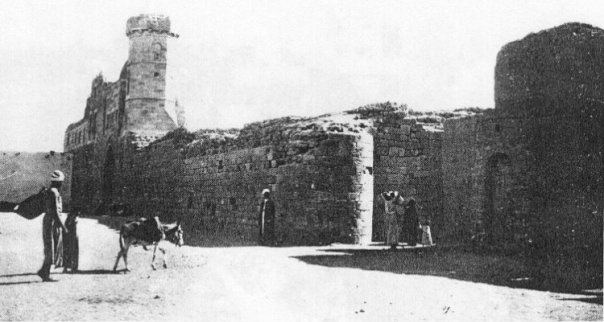Date 3 November 1956 Deaths ≈275+ | ||
 | ||
Target Male Arab villagersSuspected members of the Palestinian fedayeen | ||
The Khan Yunis massacre took place on 3 November 1956 in the Palestinian town of Khan Yunis and the nearby refugee camp of the same name in the Gaza Strip during the Suez Crisis.
Contents
According to Benny Morris, during an Israel Defense Forces operation to reopen the Egyptian-blockaded Straits of Tiran, Israeli soldiers shot two hundred Palestinians in Khan Yunis and Rafah.According to Noam Chomsky's The Fateful Triangle, citing Donald Neff, 275 Palestinians were killed in a brutal house-to-house search for Fedayeen (while a further 111 were reportedly killed in Rafah).
According to Joe Sacco's graphic novel (Footnotes in Gaza ), Israeli soldiers shot some Palestinian men in their homes and lined up others and executed them. Israeli authorities claim IDF soldiers ran into local militants and a battle erupted.
Refugee camp
Conflicting reports of skirmishes between the two peoples were also reported in the neighboring Khan Yunis Camp, which housed displaced Palestinian refugees. PLO official Abdullah Al Hourani was in the camp at the time of the killings. Al Hourani alleged that men were taken from their homes and shot by the Israeli Defense Forces. Hourani himself recalls fleeing from an attempted summary execution without injury.
Aftermath
A curfew imposed on the citizens of Gaza disallowed them from retrieving the bodies of their fellow villagers, leaving them strewn about the area overnight. Injured victims of the shootings would later be transported to Gaza City by the International Red Cross for medical treatment. Israel, bowing to international pressure, withdrew from Gaza and the Sinai in March 1957. Shortly thereafter, a mass grave was unearthed in the vicinity of Khan Yunis, containing the bound bodies of forty Palestinian men who had been shot in the back of the head.
United Nations report
On 15 December 1956, the Special Report of the Director of the United Nations Relief and Works Agency for Palestine Refugees in the Near East Covering the Period 1 November 1956 to mid-December 1956 was presented to the General Assembly of the United Nations. The report told both sides of the "Khan Yunis incident". The Director's notes also acknowledge a similar incident, the Rafah massacre, immediately following that city's occupation. According to the UNWRA report, which put together what it considered a credible list of people executed on November 3, some 275 were executed that day. Palestinian sources list the number at 415 killed, and a further 57 who were unaccounted for, or disappeared. According to the future Hamas leader Abdel Aziz al-Rantisi, an 8 year old child in Khan Yunis at the time who witnessed one of the executions, of his uncle, and who was, in turn, later assassinated by Israeli forces in 2004, 525 Gazans were murdered by the IDF.
Israeli soldier Marek Gefen was serving in Gaza during the Suez Crisis. In 1982, Gefen, having become a journalist, published his observations of walking through the town shortly following the killings. In his account of post-occupation Khan Yunis, he said, "In a few alleyways we found bodies strewn on the ground, covered in blood, their heads shattered. No one had taken care of moving them. It was dreadful. I stopped at a corner and threw up. I couldn't get used to the sight of a human slaughterhouse."
